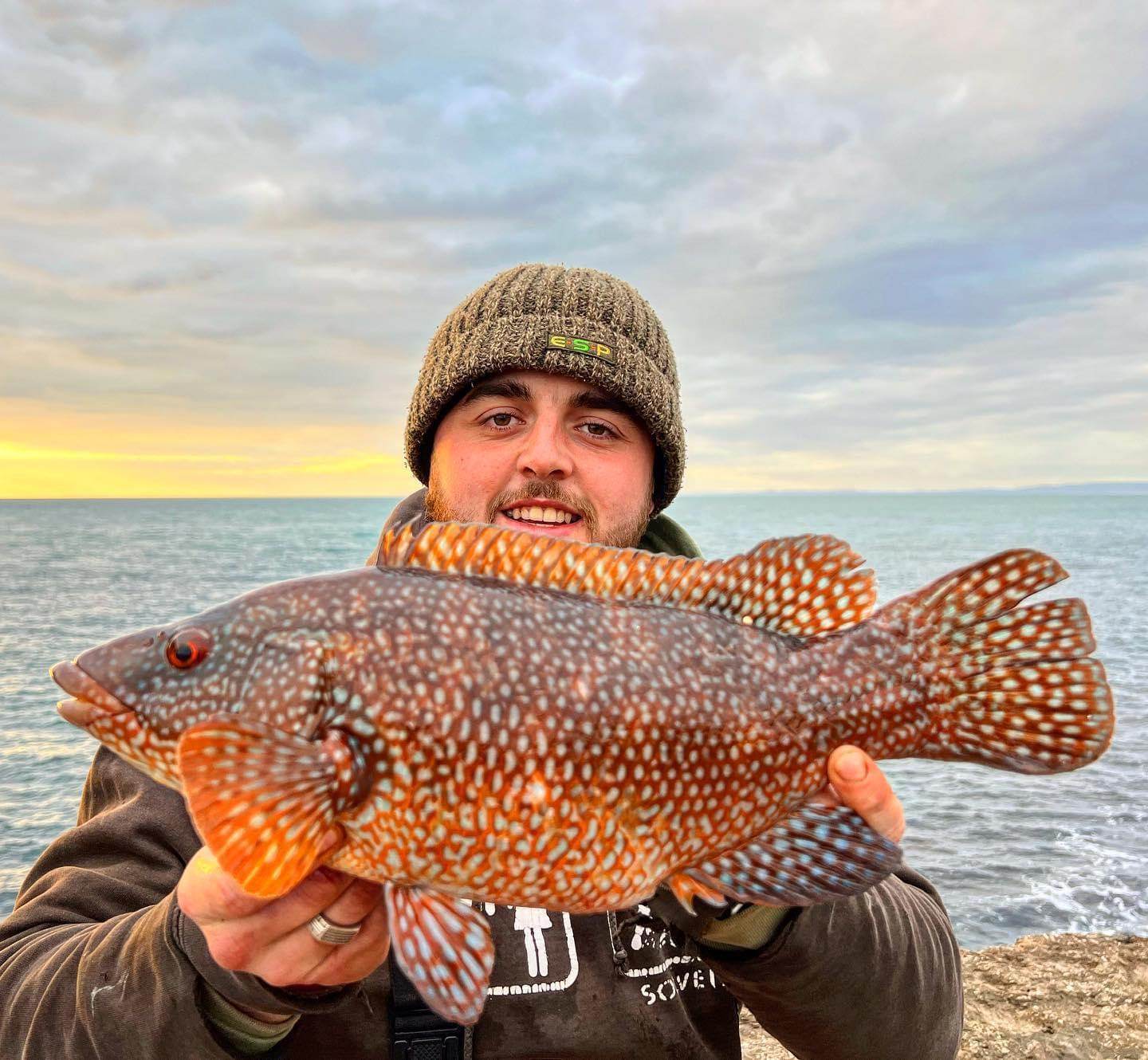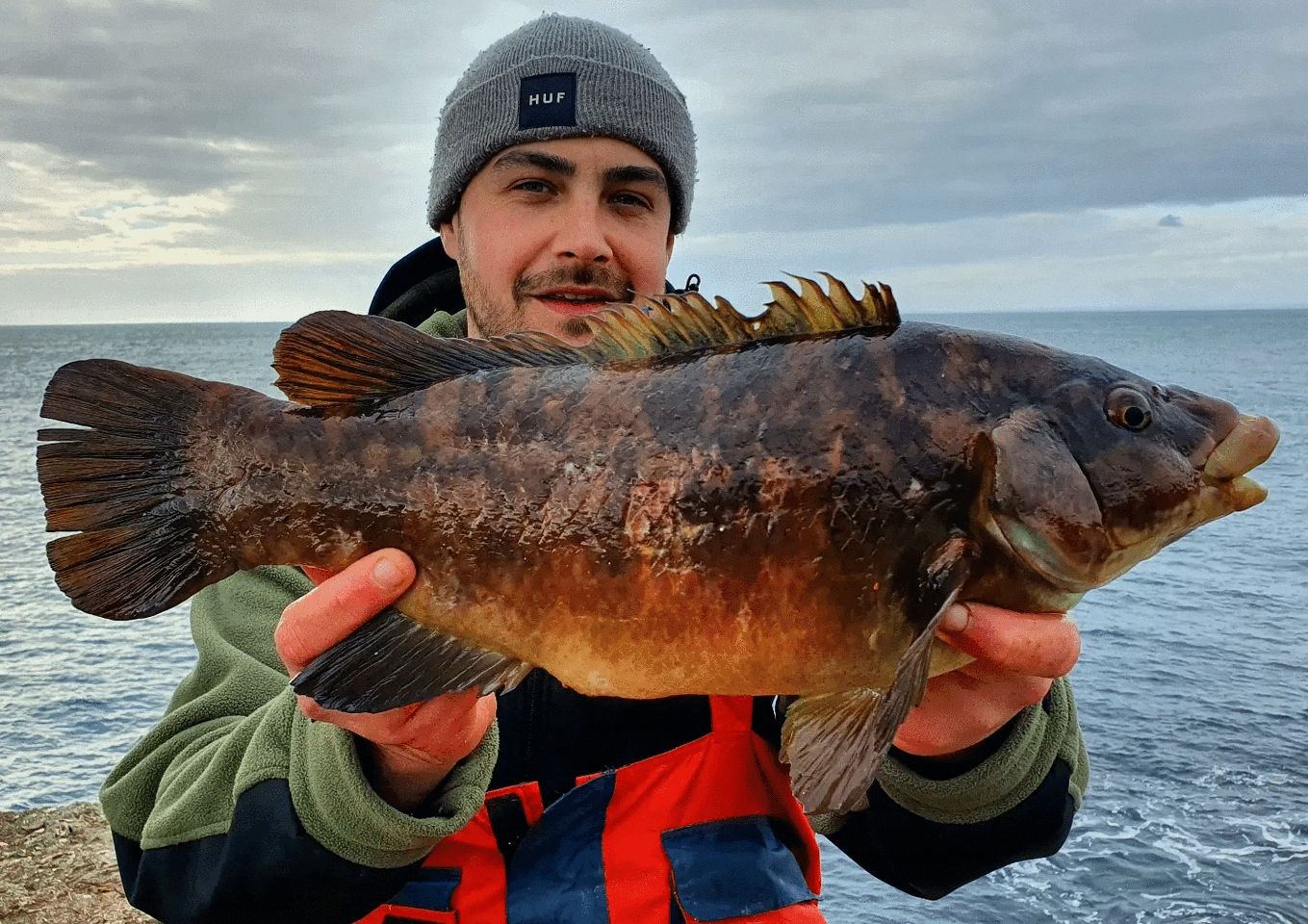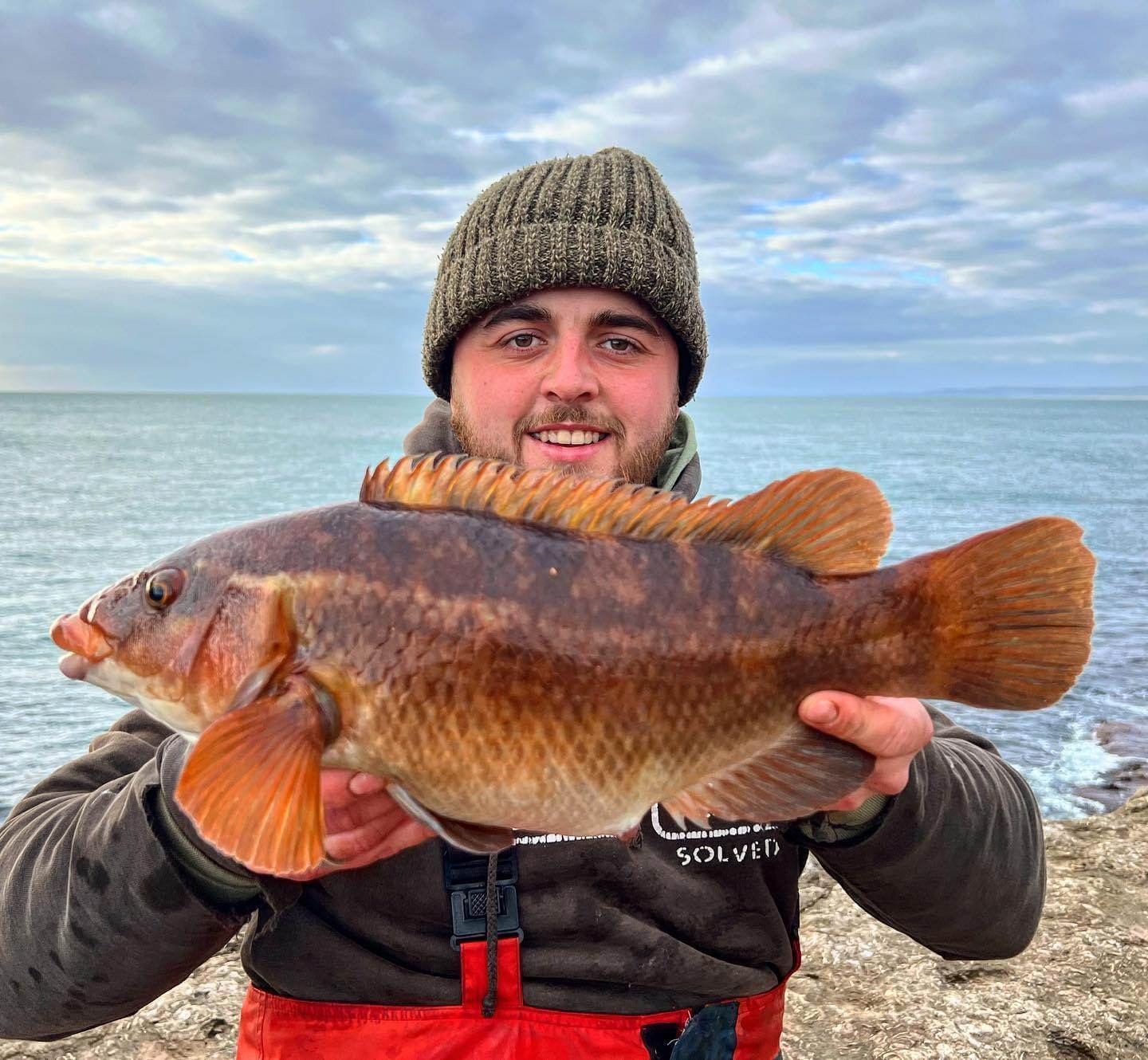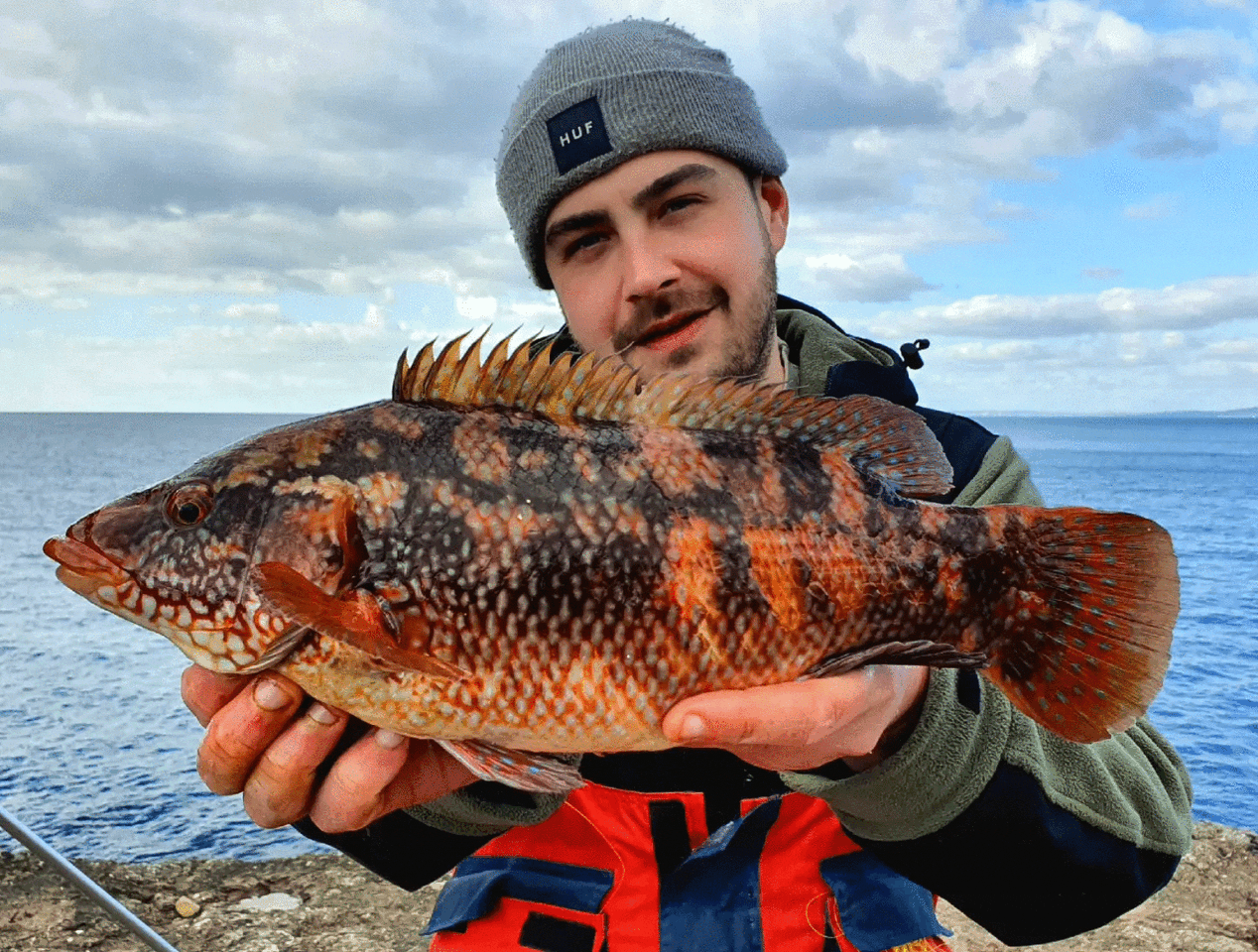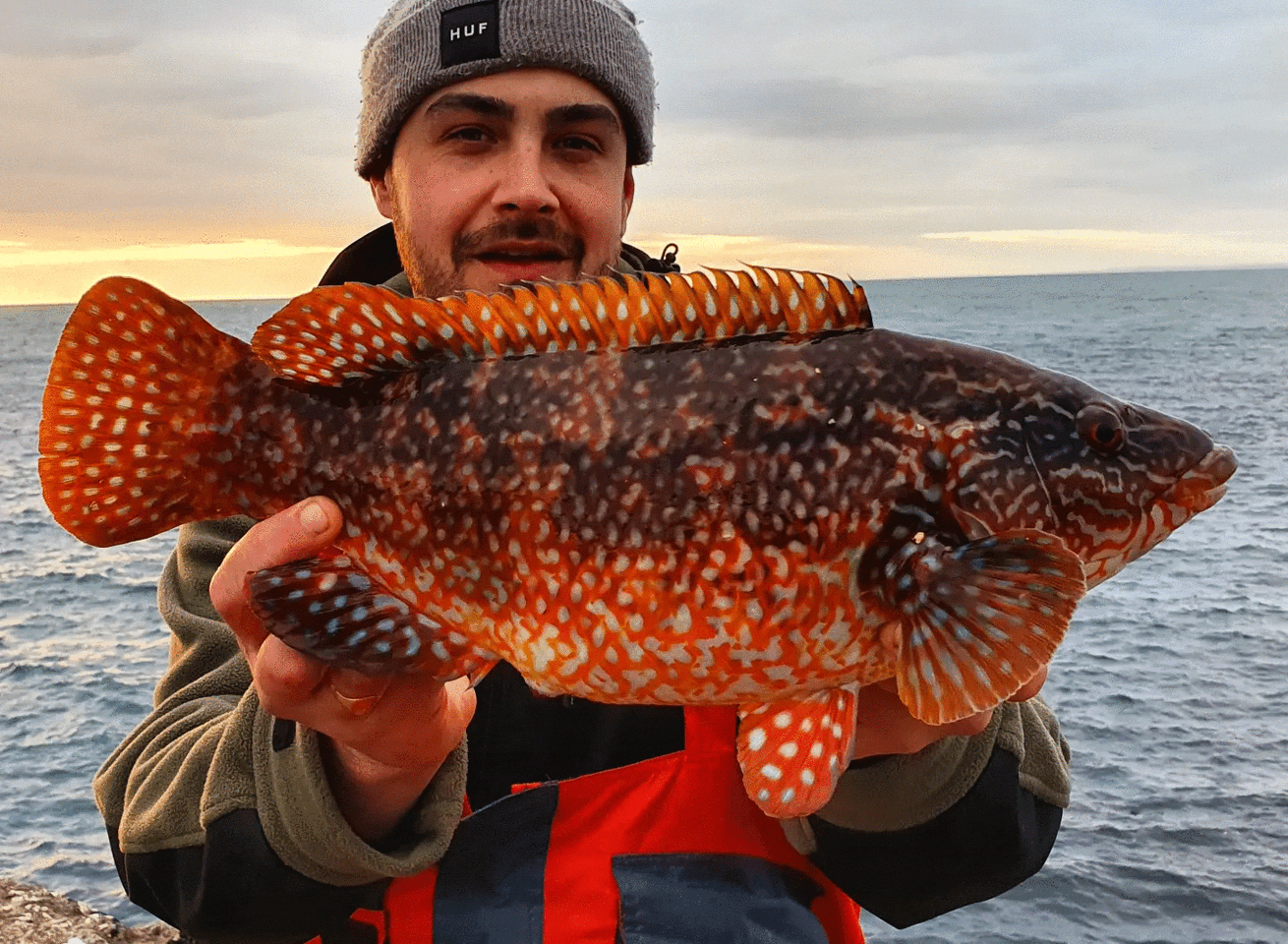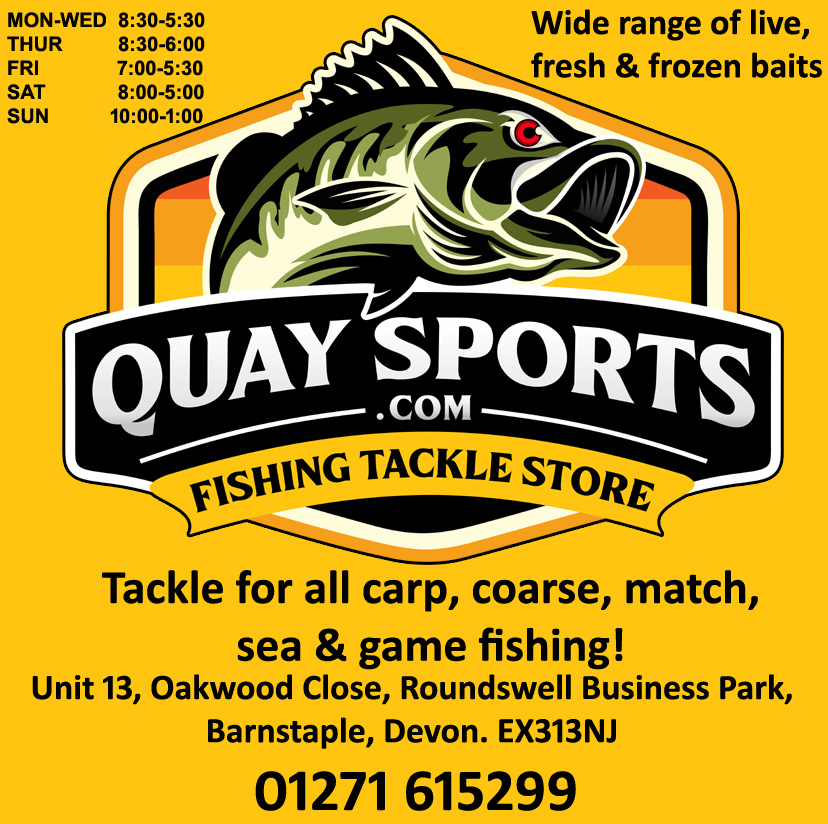Many thanks to Ollie Passmore for his article on wrasse fishing.
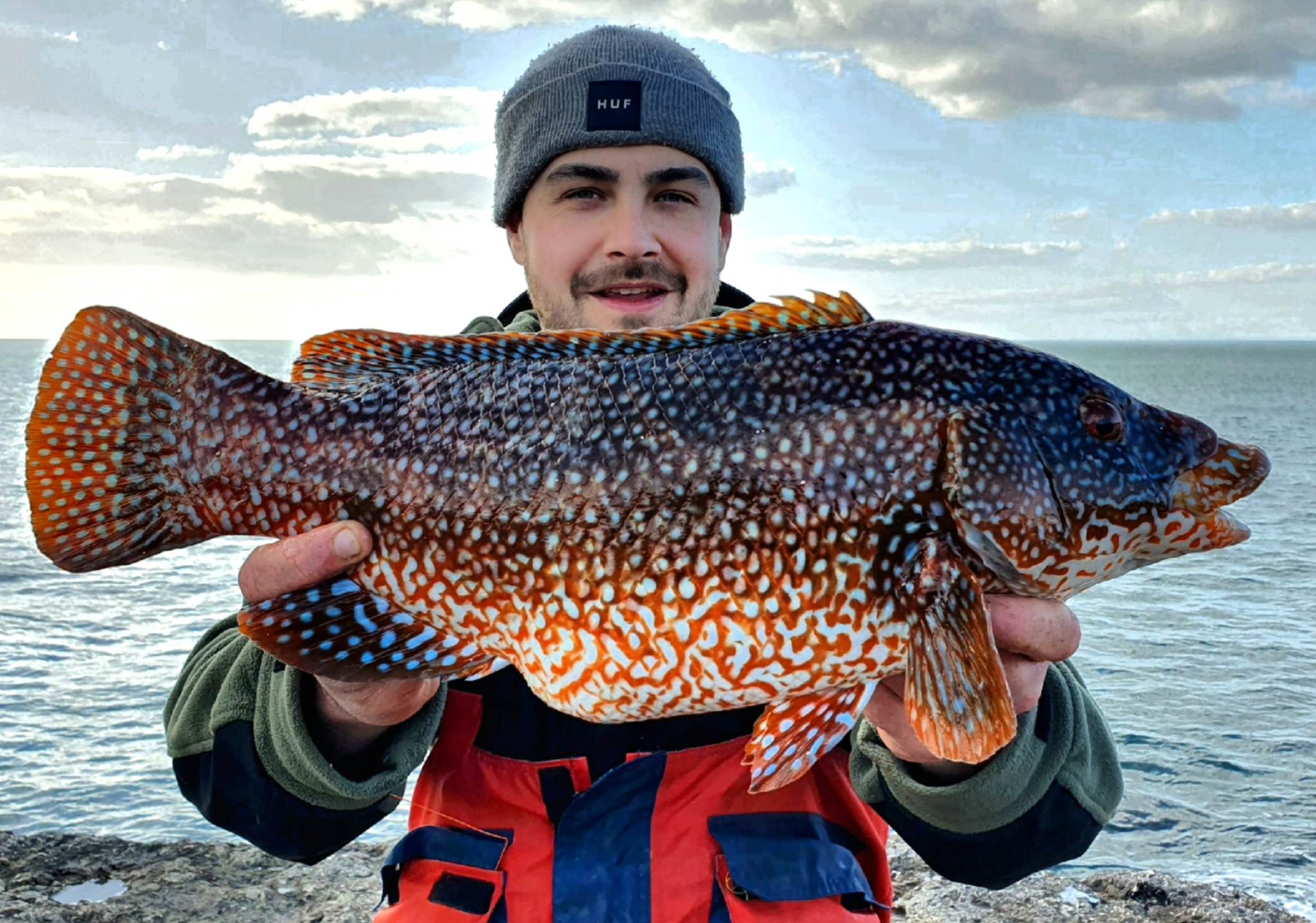
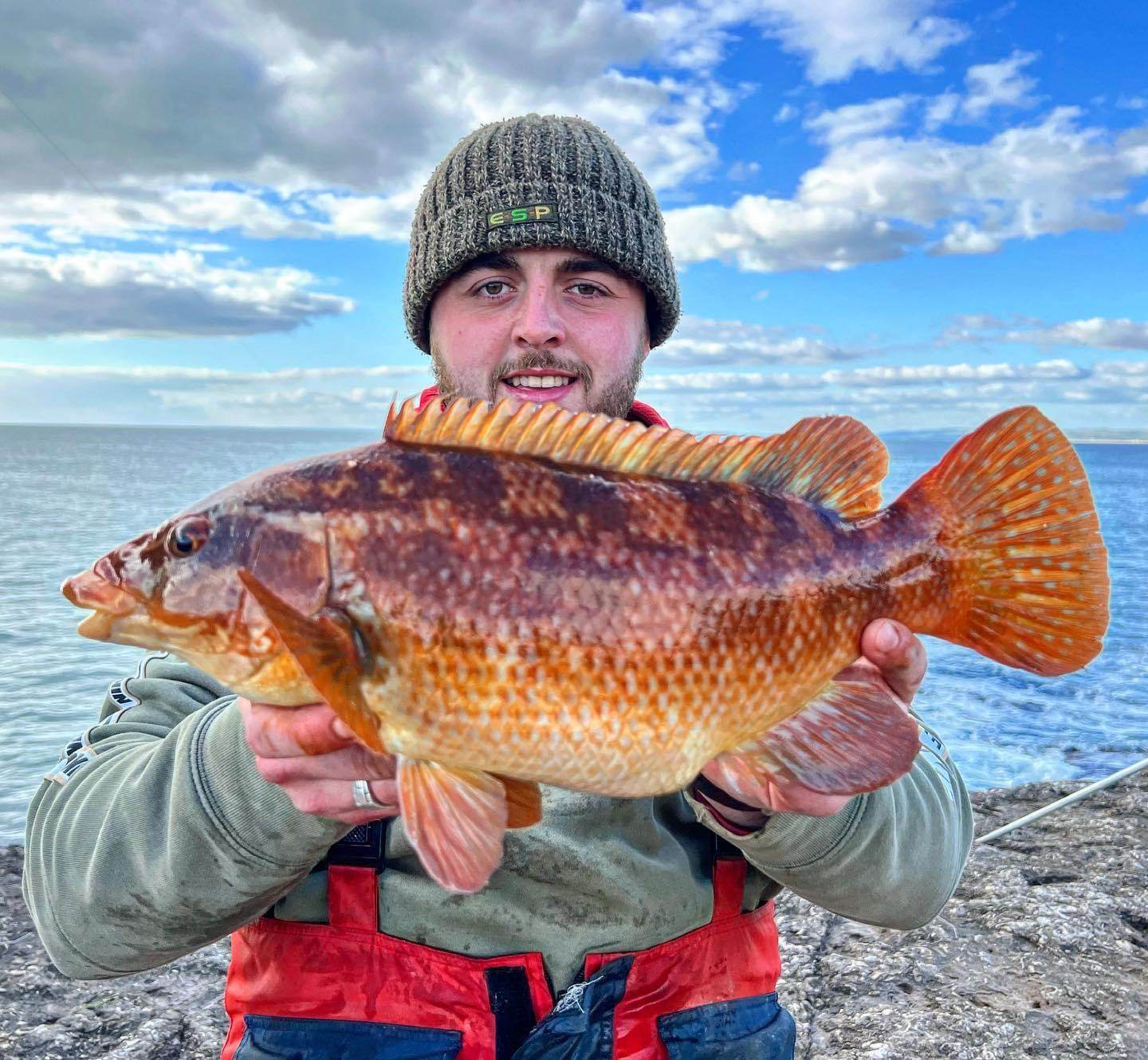
After a few successful trips away this winter targeting the ballan wrasse a window of prime conditions was forecasted. I knew a rough area that I believed could chuck up a big fish. All set to go with fresh crab and hand dug rag and prawns was our chosen bait. Arriving at the mark with very simple rigs that consist of a 3 way swivel with a short 80lb hook length and a 2/0 chino hook. Using a rotten bottom set up clipped up with a 15lb line so losing your lead is easily done. This is essential for fishing for wrasse. Wrasse are found generally in rocky areas and getting snags are often part of this fishing. Losing the lead is the best way of getting your kit back and also not tethering these fish up. 70lb braid is what I use for wrasse fishing so almost every time you get snagged you manage to get your trace back with either a bent out hook or lost lead. From first cast to last, baits where getting smashed. Lost count on the amount of fish we had over the two sessions. Most fish being around 3lb, and all being a variety of colours and patterns. Kody and myself where releasing the fish at sea level. This is important for the fish to go back well as they are fragile and tend to belly up if not treated correctly. Deep hooked fish I have found that it is best to just cut the hook length as they will often float away if you start digging around inside to try get your hook back. Wrasse are very important fish for our oceans as they keep the reefs and coral healthy and free from parasites and other things. But with a bit of fish care these fish will go back to carry on doing there important job that they were designed to do. Best fish of the session was a 4lb 4oz and a PB for me of 5lb 6oz. Kody landed lots of 3lb fish and some close to 4lb. It was a shame he didn’t get that 4lb fish. All in all, it was a trip to remember and has continued my passion and eagerness to get back out at the water’s edge targeting these very special fish that we have in our UK waters.
